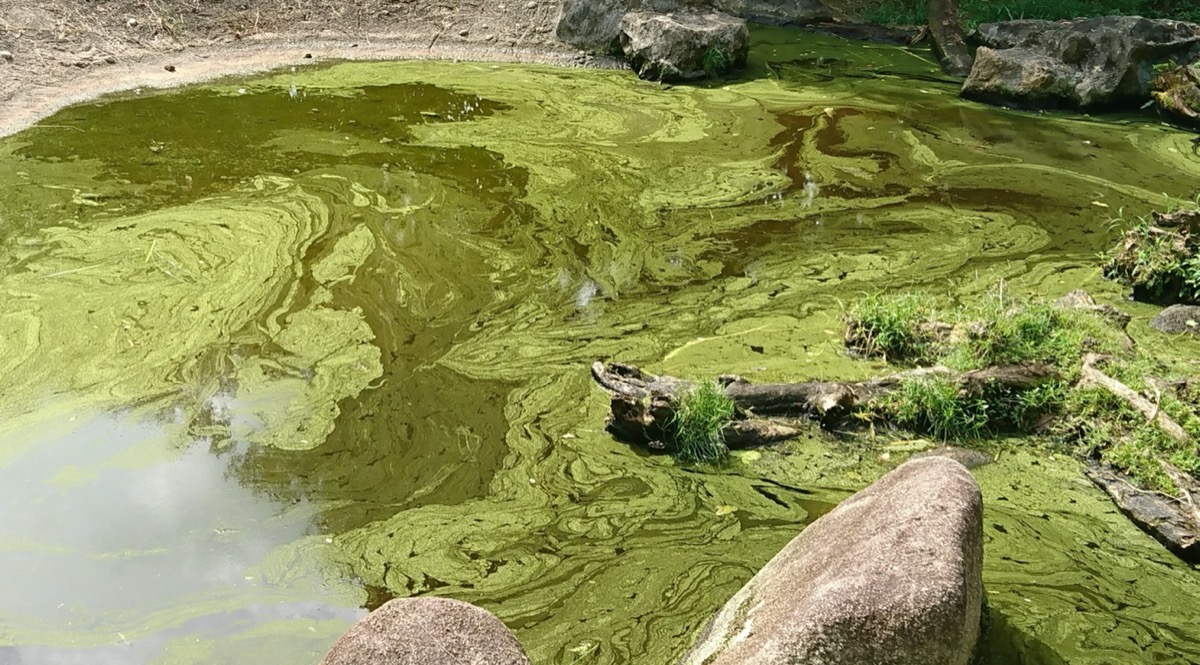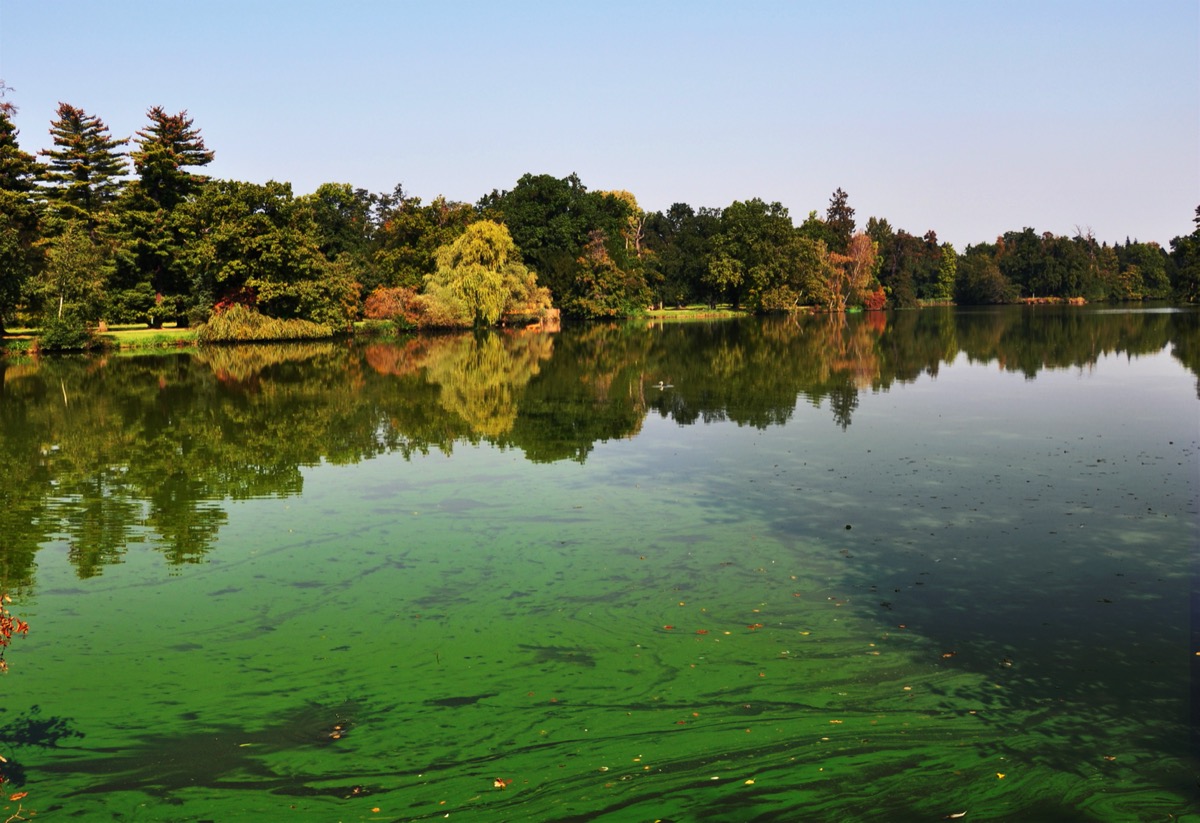Never Go in a Lake If You See This One Thing, Local Officials Warn
If your local swimming spot looks like this, you're better off avoiding it to stay safe.

Summer is nearly here, meaning the return of long hours of daylight, warm weather, and the occasional trip to your favorite swimming hole. However, before you suit up and head into the water, local officials want you to heed this one warning to protect yourself. Read on to discover the surprising sign you shouldn't swim in your local lake this summer.
RELATED: The CDC Says These Are the "Least Safe" Places You're Going Right Now.
Officials want people to avoid bodies of water with certain types of algae.

While algae is prevalent in many lakes and rivers, officials are warning against swimming in rivers that have algal blooms this summer.
In May, the Brazos River Authority in Texas issued a warning to locals about potentially dangerous algae in Lake Granbury in northern Texas, CBS DFW first reported. According to Brazos River Authority officials, there is a current algal bloom in the lake which could prove harmful to those who swim in it, as it may contain cyanobacteria, which is toxic to both animals and humans.
RELATED: If You Live Here, Prepare for a Mosquito Invasion Like You've Never Seen.
It's impossible to tell if an algal bloom is harmful by sight alone.

According to the Minnesota Pollution Control Agency, it's not possible to determine whether or not an algal bloom is toxic "blue-green algae" by appearance alone. In any case, "blue-green algae" is actually a misnomer, as what appears to be algae is actually a type of cyanobacteria.
While the Brazos River Authority notes that there are over 2,600 types of blue-green algae, the vast majority of which are not toxic, a few varieties can make animals and humans extremely sick.
Though you may not be able to tell what type of blue-green algae you're seeing just by looking at it, if you see a large number of dead fish near a lake, it may be a sign that the algal bloom is toxic, the Brazos River Authority explains. "Experts advise that if you see water with a 'pea-soup' color and consistency, avoid it," says the authority.
For more health and safety news delivered right to your inbox, sign up for our daily newsletter.
Exposure to cyanobacteria can have serious health effects.

Animals—dogs in particular—are more susceptible to the effects of cyanobacterial harmful algae blooms (cHABs) than humans, due largely to their willingness to swim in water that is visibly affected by algal blooms or has an odor that would be off-putting to humans, according to the Centers for Disease Control and Prevention (CDC).
However, humans can—and frequently do—become sick due to contact with cHABs, as well. Ingestion, inhalation, skin contact, and eye exposure are all potential means of being exposed to cHABs and can cause side effects including nausea, vomiting, joint pain, muscle weakness, blisters in the mouth, swollen lips, conjunctivitis, pneumonia, and liver failure.
There is no antidote to cyanobacteria.

Unfortunately, there are "no remedies to counteract the effects" of cHABs at the moment, according to the CDC.
However, if you do come into contact with algal blooms that may contain cyanobacteria, there are a few ways you can potentially mitigate their ill effects on your health. In addition to avoiding contact with any water source that appears to have an algal bloom in it, the CDC recommends rinsing off with fresh water immediately if you think you may have come into contact with water containing cyanobacteria and calling a doctor or Poison Control if you believe you've swallowed water that could be contaminated with cHABs.
RELATED: If You See This at Walmart, Don't Go Inside.





















